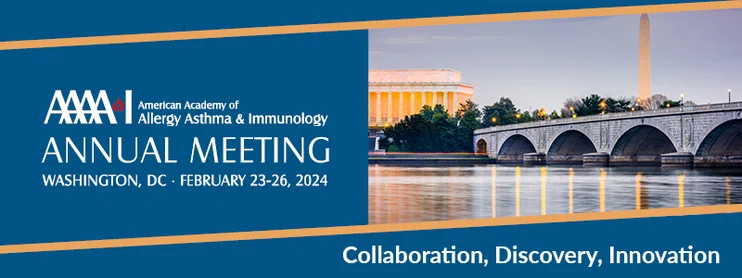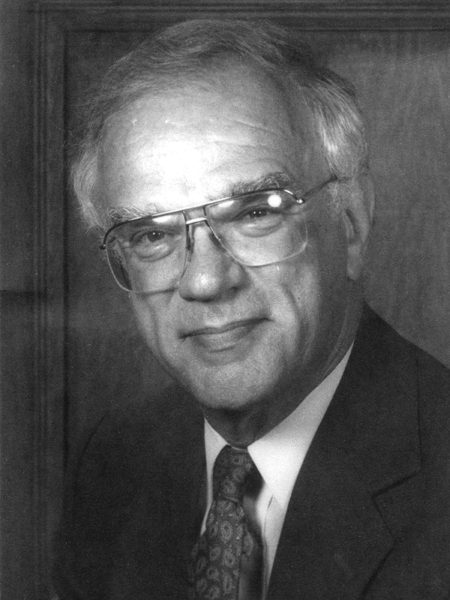


result

Feature Story
Decades of Evolution
Decades of Evolution
One member’s reflection on 60 years attending the AAAAI Annual Meeting and the growth of A/I

In 2024, Raymond G. Slavin, MD, FAAAAI, will attend his 61st AAAAI Annual Meeting. “The first time I went in 1963 I was a fellow at Northwestern,” he recalls. “At the time there were no posters – all presentations were done orally. I believe there were about 60 presentations, in all. Back then, we all fit in a single hotel!”
The field of allergy/immunology, and the Annual Meeting itself, were both very different 61 years ago. “The therapy of allergic diseases has changed so much,” said Dr. Slavin. “Cortisone inhalers and sprays weren’t introduced until the 1970s, so in the 60s the only treatment we had for asthma was epinephrine and a drug called Aminophylline, which was only administered intravenously or as a suppository. By today’s standards, treatment was very crude, and our knowledge was limited.”
Allergy as a field was incredibly small at the time. When Dr. Slavin had finished his internal medicine residency, he only applied to three allergy programs for fellowship. According to him, when he finished his fellowship in 1964, allergy was still regarded as ‘voodoo medicine.’
He first became interested in the field because his late wife had allergies and when he went into the army he was eventually put in charge of the allergy clinic. “I saw so many patients suffering,” he said. “So little was known about allergy then. It seemed like a wonderful opportunity to get in on the ground floor, and, unlike other specialties, allergy seemed to be a field where proper treatment could really help patients improve, not just make them comfortable.”
After finishing his training in allergy, his wife sent letters to every medical school in the country that didn’t have an allergist. Dr. Slavin didn’t get a single positive response. “Most of them said they’d love to have me, but didn’t have the money,” he recalled. “But my favorite response was from a program that replied saying ‘no we don’t have an allergist and no, we don’t intend to have one’.”
His past chief at Northwestern offered him a position in their practice. “On my first day I administered 120 injections,” he said. “Back then we gave a lot of shots because they worked, even if we didn’t fully understand why.”
By the next year, several full-time academic opportunities opened and he returned to Saint Louis University School of Medicine, where he created the first Division of Allergy and Immunology and where he has remained for 58 years.

Raymond G. Slavin, MD, FAAAAI
For Dr. Slavin, the inhaled cortisone preparations had one of the biggest impacts on his practicing career. “Earlier in my career, I remember finishing work at my clinic and taking my fellow to make hospital rounds,” he said. “It wasn’t unusual to stop for 20 patients with asthma, which is unheard of today. I’m hard-pressed to think of the last hospitalized adult with asthma I’ve seen personally. Treatment has improved remarkably.”
When asked about some of the biggest changes he’s seen at the Annual Meeting, a few things stood out. “There’s much more basic science now – when we added immunology it reflected that the immunologic understanding of allergy has grown incredibly. Early in my career, the AAAAI was known as the American Academy of Allergy. IgE hadn’t even been discovered yet when I was in fellowship.”
Now, in 2024, clinical practice and basic science both have a strong presence at the Annual Meeting.

“The AAAAI has done a wonderful job of blending cutting-edge research with real, practical clinical information. Obviously the majority of people attending the meeting are in practice, but the AAAAI does a wonderful job of accommodating both sides.”

Raymond G. Slavin, MD, FAAAAI
In his opinion, one of the best changes that he’s seen come to the Annual Meeting is the addition of posters and the expanded education options. “Now there’s early morning meetings and other events outside of the plenary sessions. It gives attendees a lot more opportunities for learning and discussion.”
For Dr. Slavin, who remembers an Annual Meeting before posters, a poster presentation can be more rewarding than giving an oral presentation. “So many people think that if you get a poster, it means your research wasn’t interesting enough for an oral presentation, but that’s not true. I like posters because there’s so much room for discussion – people stop and chat if interested in the research and ask questions. I find the Poster Hall very engaging.”
He also discussed how the social aspects of the Annual Meeting have changed over the decades. “I was AAAAI President in 1983 and gave my address in 1984, and back then the AAAAI was a bit of an old boy’s club,” he said. “I happened to be a part of it because of where I trained. I remember Saturday night there was always a small gathering of the ‘in’ people, and I decided I wanted to open it to the entire membership.”
Dr. Slavin worked to make that happen, and the Saturday night event opened to all members and was held at the Museum of Natural History thanks to the help of a sponsor. It was a huge success, and from that time on the Saturday night event has sold tickets to the full membership. “Social connections at the meeting are so important,” he said.
He still loves attending the AAAAI Annual Meeting, even 61 years later. “I’ve saved every program I’ve ever received,” he said. “Even at my age I find the meeting so exciting – I love to see the advances that have been made.”
He’s also excited about his upcoming named lectureship, which will be formally announced in Washington, DC. “I’m very excited, pleased and honored by the named lectureship. The first lecture for it will be delivered in 2025.”
You can learn more about Dr. Slavin’s lectureship and his background here. Learn more about the 2024 Annual Meeting on the next page!





